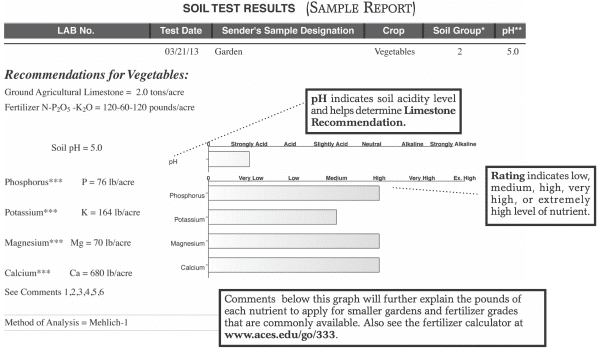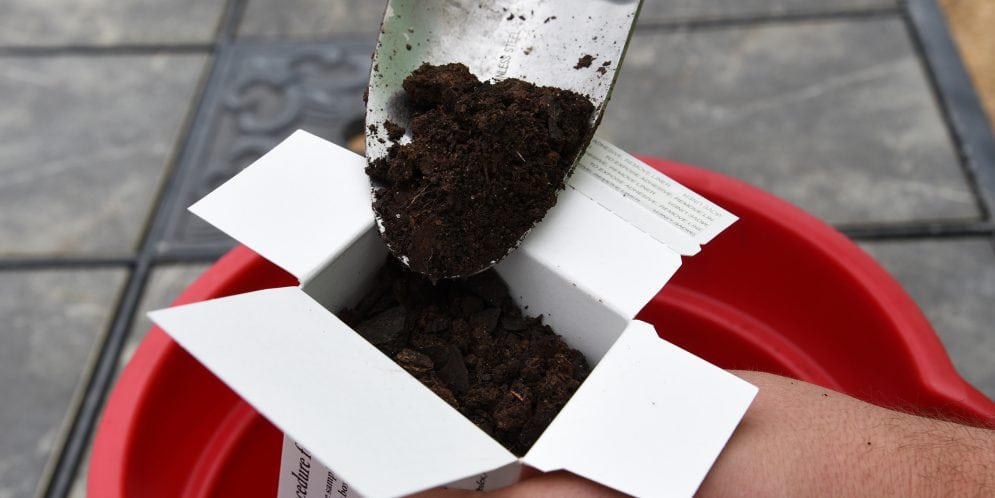Lawn & Garden

*This is an excerpt from The Alabama Vegetable Gardener, ANR-0479.
Soil-test records from Auburn University show that more than 40 percent of Alabama garden soils have very high or excessive levels of phosphorus (P). While excessive phosphorus may not cause any noticeable problems in most gardens, some crops could develop nutritional imbalances.
Phosphorus is naturally low in all Alabama soils. Years of fertilizing with a complete fertilizer such as 13-13-13, animal manures, or composts have built up this nutrient in some soils. Unlike other plant nutrients such as nitrogen or potassium, phosphorus doesn’t leach out of the soil. It is tied up by soil minerals and slowly released to growing plants.
A gardener who annually spreads about 20 pounds of 13-13-13 fertilizer per 1,000 square feet will be putting out 110 pounds of phosphate (P2O5) fertilizer per acre. High yielding garden crops such as cabbage, peas, potatoes, tomatoes, and corn will take up about 48 pounds per acre of P2O5. However, only about 30 pounds of this will be removed from the garden in the vegetables. This leaves an excess of 80 pounds of phosphate to build up in the soil.
Excessive phosphorus, particularly in combination with a high soil pH (above 6.5), can induce micronutrient deficiencies of zinc and iron. Zinc deficiencies usually show up in early spring as a dwarfing and yellow striping between the veins of younger leaves. It is seen most frequently on corn in Alabama. Iron deficiencies produce a yellowing of younger leaves with veins remaining green.
Nutrient deficiencies such as these are difficult to correct because they are caused by an imbalance—not a simple deficiency. The best solution is to prevent the problem by soil testing and using low phosphorus fertilizers on soils already testing HIGH or VERY HIGH in phosphorus. Following are suggestions for soils that test VERY HIGH and EXCESSIVELY HIGH in phosphorus.
- Use a mixed fertilizer with no P, such as 15-0-15. These may be difficult to find.
- Use a combination of 33-0-0 to provide nitrogen and muriate of potash (0-0-60) to provide potassium. (Other sources of N and K may be substituted.)
- Grow a legume cover crop. Legumes prefer soils high in P, and they fix their own N from atmospheric N. When they die and decompose, they not only increase soil organic matter but also release all this organic N to the soil.

For more information, see other excerpts from The Alabama Vegetable Gardener, ANR-0479.
Kerry Smith, Extension Home Horticulture Associate; Ayanava Majumdar, Extension Entomologist; Charles Mitchell, Extension Agronomist, Professor, Agronomy and Soils; John Everest, Visiting Professor, Agronomy and Soils; Edward Sikora, Extension Plant Pathologist, Professor, Entomology and Plant Pathology; Joseph Kemble, Extension Specialist, Professor, Horticulture; all with Auburn University; and Rufina Ward, Research Entomologist, Natural Resources and Environmental Sciences, Alabama A&M University.
Reviewed October 2021, The Alabama Vegetable Gardener, ANR-0479

